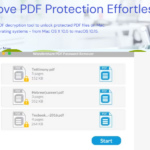Best Way to Increase Organic Traffic for Affiliate Websites

Increasing organic traffic is one of the most effective ways to grow an affiliate website. Unlike paid traffic, organic traffic doesn’t require continuous investment and can provide a sustainable source of visitors. However, achieving high levels of organic traffic is a complex process that requires a mix of strategies, including keyword research, content creation, SEO optimization, and link building. In this blog post, we will explore the best ways to increase organic traffic for affiliate websites, backed by actionable tips and proven techniques.
01 Understanding the Importance of Organic Traffic
Organic traffic refers to visitors who find your website through search engines like Google, Bing, or Yahoo, without any paid advertising. It is considered highly valuable because:
- Trust and Credibility: Users trust search engines to deliver relevant results. Ranking high in search results enhances your website’s credibility.
- Cost-Effective: Unlike paid traffic, organic traffic doesn’t require a continuous investment, making it more sustainable in the long term.
- Targeted Audience: Organic traffic often includes visitors actively searching for the content, products, or services you offer, leading to higher conversion rates.
02 Keyword Research: The Foundation of Organic Traffic
Keyword research is the backbone of any successful organic traffic strategy. It involves identifying the search terms your target audience uses when looking for information, products, or services related to your niche.
a. Focus on Intent Keywords
Intent keywords are search terms that indicate a user’s intent, such as buying, learning, or comparing. For affiliate websites, focusing on intent keywords can lead to higher conversion rates. For example:
- Transactional Intent: Keywords like “buy,” “discount,” “coupon,” “best price” are used by users ready to make a purchase.
- Informational Intent: Keywords like “how to,” “best,” “guide,” “review” indicate users are in the research phase.
b. Utilize Long-Tail Keywords
Long-tail keywords are longer and more specific keyword phrases that visitors are more likely to use when they’re closer to making a purchase. While they may have lower search volume, they tend to convert better because they attract highly targeted traffic. Examples include:
- “Best noise-canceling headphones under $200”
- “How to lose weight after pregnancy”
Using tools like Google Keyword Planner, Ahrefs, or SEMrush can help you identify relevant long-tail keywords with lower competition, increasing your chances of ranking.
03 Create High-Quality, Intent-Driven Content
Content is the cornerstone of organic traffic generation. For an affiliate website, the content should not only attract visitors but also guide them through the purchasing process.
a. Write Comprehensive Product Reviews
Product reviews are a staple of affiliate websites. A well-written review provides value by giving an honest and detailed assessment of a product. Include pros and cons, comparisons with similar products, user testimonials, and a clear call to action.
For example, if you’re reviewing a fitness tracker, cover aspects like battery life, ease of use, accuracy, and how it compares to other models in the same price range. Include affiliate links naturally within the content, ensuring they are relevant and helpful.
b. Create In-Depth Guides and Tutorials
Guides and tutorials are valuable for users in the research phase. They help establish your site as an authority in your niche. For instance:
- A step-by-step guide to setting up a home gym
- A tutorial on how to choose the right running shoes for different terrains
These types of content not only provide value to your audience but also naturally incorporate affiliate links.
C. Optimize Content for SEO
SEO optimization is crucial for increasing organic traffic. Ensure your content is optimized by:
- Using targeted keywords: Integrate your primary and secondary keywords naturally into your content, including headings, meta descriptions, and alt tags for images.
- Internal Linking: Link to other relevant pages or posts within your site to keep users engaged and help search engines understand the structure of your site.
- Improve Readability: Use short paragraphs, bullet points, and subheadings to make your content easy to read. Tools like Yoast SEO can help you assess and improve readability.
04 On-Page SEO: Optimize Your Website
On-page SEO refers to optimizing individual web pages to rank higher and earn more relevant traffic in search engines. Here’s how you can improve your on-page SEO:
a. Optimize Title Tags and Meta Descriptions
Your title tag and meta description are the first things users see in search engine results. Make sure they are compelling and include your target keywords. The title should be between 50-60 characters, and the meta description should be under 160 characters.
b. Improve Page Load Speed
Page load speed is a crucial ranking factor. A slow website can lead to high bounce rates, negatively impacting your rankings. Use tools like Google PageSpeed Insights to analyze your website’s performance and implement recommendations to improve load times, such as compressing images, using browser caching, and reducing server response time.
C. Mobile Optimization
With a significant portion of web traffic coming from mobile devices, ensuring your website is mobile-friendly is essential. Use a responsive design that adjusts to different screen sizes and test your site on various devices to ensure it’s user-friendly.
05 Link Building: Strengthen Your Website’s Authority
Link building is the process of acquiring hyperlinks from other websites to your own. These links, known as backlinks, are one of the top-ranking factors in Google’s algorithm.
a. Guest Posting
Guest posting involves writing content for other websites in your niche. In exchange, you can usually include a link back to your website. This not only helps build backlinks but also drives referral traffic from the host website.
When guest posting, focus on high-quality, authoritative websites. The content should be valuable and relevant to their audience, increasing the likelihood of your guest post being accepted and read.
b. Broken Link Building
Broken link building involves finding broken links on other websites and suggesting your content as a replacement. This strategy can be highly effective because you’re helping the website owner fix an issue while gaining a backlink in return.
Use tools like Ahrefs or Broken Link Checker to identify broken links on websites in your niche, then reach out to the webmaster with your suggestion.
C. Leverage Social Media
While social media links are usually “no-follow” and don’t directly impact SEO, they can drive traffic to your website and increase the likelihood of earning backlinks. Share your content on social media platforms like Twitter, Facebook, LinkedIn, and Pinterest to reach a broader audience.
06 Technical SEO: Ensure Your Website is Crawlable and Indexable
Technical SEO involves optimizing the infrastructure of your website, ensuring that search engines can easily crawl and index your pages. This is crucial for improving organic traffic.
a. XML Sitemap
An XML sitemap is a file that lists all the pages on your website, helping search engines crawl your site more efficiently. Ensure your sitemap is up-to-date and submit it to Google Search Console.
b. Fix Crawl Errors
Crawl errors occur when a search engine tries to access a page on your website but fails. Regularly check for crawl errors in Google Search Console and fix them to ensure all your pages are accessible.
C. Implement SSL for Security
Google considers security as a ranking factor, so having an SSL certificate is essential. An SSL certificate ensures your website uses HTTPS, which encrypts data transferred between the user and your website. This not only helps with rankings but also builds trust with your audience.
07 Monitor and Analyze Your Traffic
To effectively increase organic traffic, it’s essential to monitor and analyze your website’s performance regularly. Use tools like Google Analytics and Google Search Console to track:
- Traffic Sources: Identify which sources are driving the most traffic, whether it’s organic search, social media, or referrals.
- User Behavior: Analyze how users interact with your site, including bounce rates, time spent on pages, and conversion rates.
- Keyword Performance: Track the performance of your target keywords, including rankings and click-through rates (CTR).
Regular analysis helps you identify what’s working and what isn’t, allowing you to adjust your strategies accordingly.
08 Content Repurposing: Maximize Your Content’s Value
Content repurposing involves taking existing content and transforming it into different formats to reach a broader audience. For example:
- Convert Blog Posts into Videos: Create YouTube videos summarizing your blog posts, and embed them on your website.
- Turn Guides into Infographics: Infographics are visually appealing and easy to share, making them great for social media.
- Create a Podcast: If you have in-depth guides or interviews, consider turning them into podcast episodes.
Repurposing content not only extends the life of your content but also attracts traffic from different channels.
09 Leverage User-Generated Content
User-generated content (UGC) is any content created by your audience, such as reviews, testimonials, or social media posts. UGC is powerful because it builds trust and encourages engagement.
Encourage your audience to leave reviews, share their experiences, or participate in discussions on your website or social media platforms. Displaying UGC on your website can improve SEO and increase organic traffic by adding fresh, relevant content.
10 Stay Updated with SEO Trends
SEO is an ever-evolving field, with search engines constantly updating their algorithms. Staying updated with the latest SEO trends is crucial for maintaining and increasing organic traffic.
- Follow Industry Blogs: Websites like Moz, Search Engine Journal, and Ahrefs regularly publish updates on the latest SEO trends.
- Join SEO Communities: Participate in online forums and communities where SEO professionals discuss updates and strategies.
- Continuously Test and Adapt: SEO is not a one-time effort. Continuously test different strategies and adapt to changes in search engine algorithms to stay ahead of the competition.
Conclusion
Increasing organic traffic for an affiliate website requires a combination of strategic planning, continuous optimization, and staying updated with the latest trends. By focusing on keyword research, creating high-quality content, optimizing for SEO, building strong backlinks, and analyzing your performance, you can significantly boost your organic traffic and, ultimately, your affiliate earnings.
Remember, SEO is a long-term game, but with persistence and the right approach, you can achieve sustainable growth for your affiliate website.



